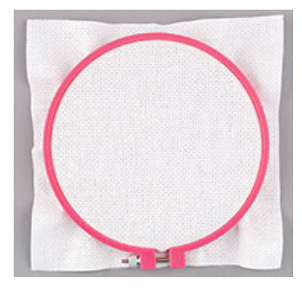Using an Embroidery Hoop


Embroidery can be worked without any type of hoop or frame. However, most stitchers enjoy the stability a hoop or frame gives. A hoop holds the fabric tight, preventing it from wrinkling or bunching up while you stitch. With the fabric held taut, you can maintain consistent tension in your stitches, leading to a more even and professional-looking finished piece. A taut surface makes it easier to see where to place your needle, reducing strain on your eyes and making the stitching process smoother. Holding a hoop instead of the fabric directly can reduce hand fatigue, as you’re not constantly pulling on the fabric to keep it tight.
Select a hoop that’s slightly larger than the area you plan to stitch. Most hoops range from 4 inches to 12 inches in diameter. When securing your fabric in the hoop, gently pull the edges of the fabric outward to ensure it is evenly stretched across the hoop. Allowing a very slight “give” in the fabric can allow the needle to slip in and out more easily. Move the hoop as needed, repositioning it to focus on different areas of your design. Always remove the hoop when not stitching to prevent the fabric from becoming permanently creased or distorted.
Plastic or Wood Hoops
These are lightweight, come in various sizes and can be adjusted using a screw to tighten the fabric. Both options grip the fabric, but plastic hoops are less likely to lose tension over time compared with wood hoops, which can lose their grip over time, especially if they get damp.
